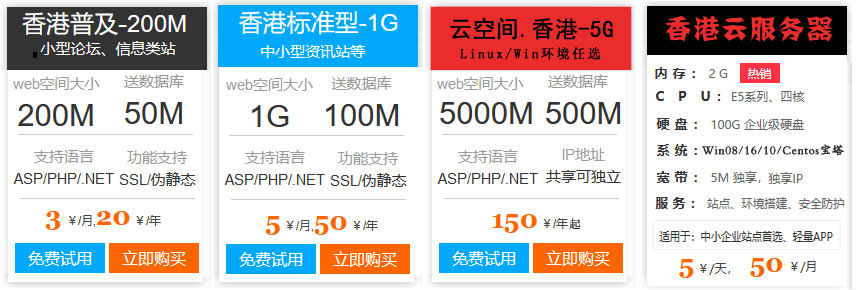本篇文章为大家展示了Java8中Stream API如何使用,内容简明扼要并且容易理解,绝对能使你眼前一亮,通过这篇文章的详细介绍希望你能有所收获。
首先创建一个对象publicclassEmployee{
privateintid;
privateString name;
privateintage;
privatedoublesalary;
privateStatus status;
publicenumStatus {
FREE, BUSY, VOCATION;
}
publicEmployee(){
}
publicEmployee(String name){
this.name = name;
}
publicEmployee(String name, intage){
this.name = name;
this.age = age;
}
publicEmployee(intid, String name, intage, doublesalary){
this.id = id;
this.name = name;
this.age = age;
this.salary = salary;
}
publicEmployee(intid, String name, intage, doublesalary, Status status){
this.id = id;
this.name = name;
this.age = age;
this.salary = salary;
this.status = status;
}
//省略get,set等。。。
}随便初始化一些数据List
newEmployee(101, “张三”, 18, 9999.99, Status.FREE), newEmployee(103, “王五”, 28, 3333.33, Status.VOCATION),
newEmployee(104, “赵六”, 8, 7777.77, Status.BUSY), newEmployee(104, “赵六”, 8, 7777.77, Status.FREE),
newEmployee(104, “赵六”, 8, 7777.77, Status.FREE), newEmployee(105, “田七”, 38, 5555.55, Status.BUSY));
* 接收Lambda, 从流中排除某些元素。
*/@Test
voidtestFilter(){
empList.stream().filter((e) -> {
returne.getSalary() >= 5000;
}).forEach(System.out::println);
}跳过流的前n个元素 skip/**
* 跳过元素,返回一个扔掉了前n个元素的流。
*/
@Test
void testSkip() {
empList.stream().filter((e) -> e.getSalary() >= 5000).skip(2).forEach(System.out::println);
}去除重复元素 distinct/**
* 筛选,通过流所生成元素的 hashCode() 和 equals() 去除重复元素
*/
@Test
void testDistinct() {
empList.stream().distinct().forEach(System.out::println);
}截取流的前n个元素 limit/**
* 截断流,使其元素不超过给定数量。
*/
@Test
void testLimit() {
empList.stream().filter((e) -> {
returne.getSalary() >= 5000;
}).limit(3).forEach(System.out::println);
}映射 map/**
* 接收一个函数作为参数,该函数会被应用到每个元素上,并将其映射成一个新的元素
*/
@Test
void testMap() {
empList.stream().map(e -> e.getName()).forEach(System.out::println);
empList.stream().map(e -> {
empList.forEach(i -> {
i.setName(i.getName() + “111”);
});
returne;
}).collect(Collectors.toList());
}自然排序 sorted/**
* 产生一个新流,其中按自然顺序排序
*/
@Test
void testSorted() {
empList.stream().map(Employee::getName).sorted().forEach(System.out::println);
}自定义排序 sorted(Comparator comp)/**
* 产生一个新流,其中按自然顺序排序
*/
@Test
void testSortedComparator() {
empList.stream().sorted((x, y) -> {
if(x.getAge() == y.getAge()) {
returnx.getName().compareTo(y.getName());
} else{
returnInteger.compare(x.getAge(), y.getAge());
}
}).forEach(System.out::println);
}
* 检查是否至少匹配一个元素
*/
@Test
voidtestAnyMatch() {
boolean b = empList.stream().anyMatch((e) -> e.getStatus().equals(Status.BUSY));
System.out.println(“boolean is : “+ b);
}是否匹配所有元素 allMatch/**
* 检查是否匹配所有元素
*/
@Test
voidtestAllMatch() {
boolean b = empList.stream().allMatch((e) -> e.getStatus().equals(Status.BUSY));
System.out.println(“boolean is : “+ b);
}/**
* 检查是否没有匹配的元素
*/
@Test
voidtestNoneMatch() {
boolean b = empList.stream().noneMatch((e) -> e.getStatus().equals(Status.BUSY));
System.out.println(“boolean is : “+ b);
}返回第一个元素 findFirst/**
* 返回第一个元素
*/
@Test
voidtestFindFirst() {
Optional
.findFirst();
if(op.isPresent()) {
System.out.println(“first employee name is : “+ op.get().getName().toString());
}
}
* 返回当前流中的任意元素
*/
@Test
voidtestFindAny() {
Optional
.findAny();
if(op.isPresent()) {
System.out.println(“any employee name is : “+ op.get().getName().toString());
}
}
* 返回流中元素的总个数
*/
@Test
voidtestCount() {
longcount = empList.stream().filter((e) -> e.getStatus().equals(Status.FREE)).count();
S 香港云主机ystem.out.println(“Count is : “+ count);
}返回流中的最大值 max/**
* 返回流中最大值
*/
@Test
voidtestMax(){
Optional
System.out.println(op.get());
}
* 返回流中最小值
*/
@Test
voidtestMin() {
Optional
System.out.println(op2.get());
}
归约是将集合中的所有元素经过指定运算,折叠成一个元素输出/**
* 可以将流中元素反复结合起来,得到一个值。返回T
*/
@Test
voidtestReduce(){
Optional
System.out.println(op.get());
}
/**
* 可以将流中元素反复结合起来,得到一个值,返回Optional
*/
@Test
voidtestReduce1(){
Optional
.map((ch) -> {
if(ch.equals(‘六’))
return1;
else
return0;
}).reduce(Integer::sum);
System.out.println(sum.get());
}
* 把流中的元素收集到list里。
*/
@Test
void testCollectorsToList() {
List
list.forEach(System.out::println);
}
* 把流中的元素收集到set里。
*/
@Test
void testCollectorsToSet() {
Set
list.forEach(System.out::println);
}
* 把流中的元素收集到新创建的集合里。
*/
@Test
void testCollectorsToCollection() {
HashSet
hs.forEach(System.out::println);
}
* 根据比较器选择最大值。
*/
@Test
voidtestCollectorsMaxBy(){
Optional
System.out.println(max.get());
}
* 根据比较器选择最小值。
*/
@Test
voidtestCollectorsMinBy(){
Optional
System.out.println(max.get());
}
* 对流中元素的整数属性求和。
*/
@Test
voidtestCollectorsSummingDouble(){
Double sum = empList.stream().collect(Collectors.summingDouble(Employee::getSalary));
System.out.println(sum);
}对流中元素的某个字段求平均值 Collectors.averagingDouble()/**
* 计算流中元素Integer属性的平均值。
*/
@Test
voidtestCollectorsAveragingDouble(){
Double avg = empList.stream().collect(Collectors.averagingDouble(Employee::getSalary));
System.out.println(avg);
}分组,类似sql的 group byCollectors.groupingBy/**
* 分组
*/
@Test
voidtestCollectorsGroupingBy(){
Map
System.out.println(map);
}
* 多级分组
*/
@Test
voidtestCollectorsGroupingBy1(){
Map
.collect(Collectors.groupingBy(Employee::getStatus, Collectors.groupingBy((e) -> {
if(e.getAge() >= 60)
return”老年”;
elseif(e.getAge() >= 35)
return”中年”;
else
return”成年”;
})));
System.out.println(map);
}
* 字符串拼接
*/
@Test
voidtestCollectorsJoining(){
String str = empList.stream().map(Employee::getName).collect(Collectors.joining(“,”, “—-“, “—-“));
System.out.println(str);
}publicstaticStream
List
for(Character ch : str.toCharArray()) {
list.add(ch);
}
returnlist.stream();
}
ArchitectureIn a typical HA clusiter, two separate machines are configured as NameNodes. At any point in time, exactly one of the …
免责声明:本站发布的图片视频文字,以转载和分享为主,文章观点不代表本站立场,本站不承担相关法律责任;如果涉及侵权请联系邮箱:360163164@qq.com举报,并提供相关证据,经查实将立刻删除涉嫌侵权内容。



 微信扫一扫
微信扫一扫 


